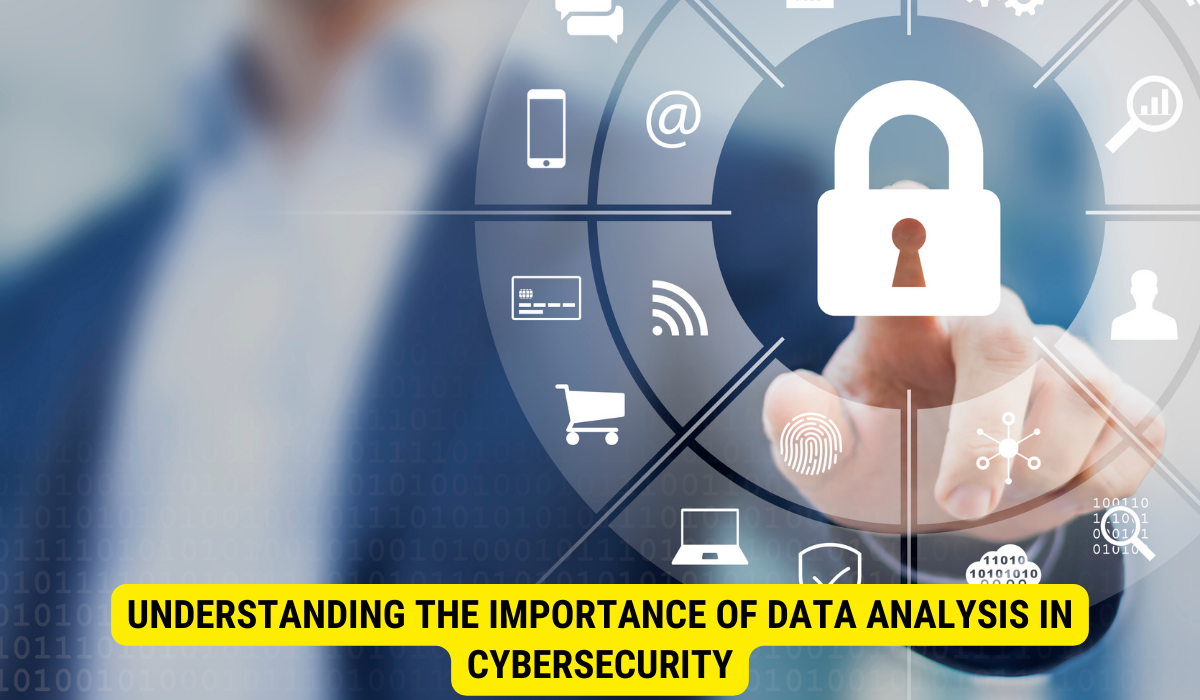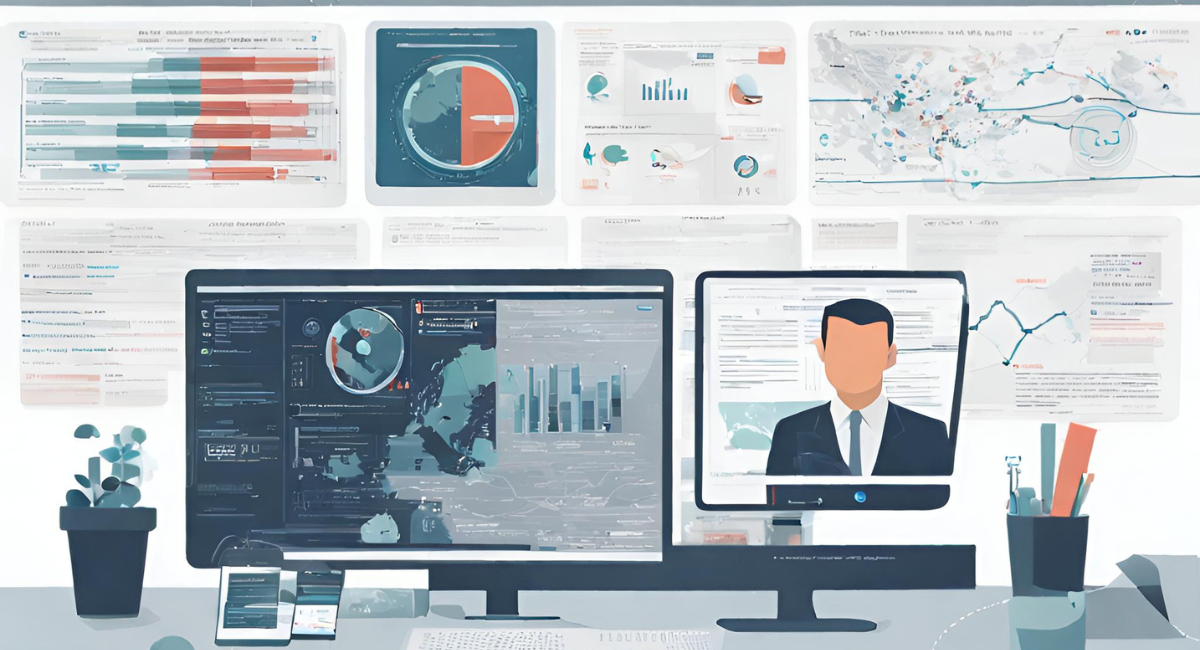Analyzing one’s data is crucial for enhancing cyber security. By studying this data, organizations can identify vulnerabilities, gain valuable insights, detect patterns, and make informed decisions to fortify against potential cyber threats.
In the modern digital era, safeguarding against online threats is paramount. As cyber challenges evolve in complexity, entities need to refine their protective strategies perpetually. A potent method to bolster online safety is introspection into organizational data. By meticulously evaluating in-house data, one can derive critical insights, pinpoint weak spots, and take knowledgeable steps to mitigate prospective risks.
Understanding the Importance of Data Analysis in CyberSecurity
Before diving into the specifics of analyzing your own data, it is crucial to understand the significance of data analysis in cyber security. Data analysis plays a pivotal role by providing organizations with actionable intelligence. It aids in detecting patterns, uncovering anomalies, and understanding the behavior of potential attackers. By leveraging data analysis techniques, organizations can develop proactive security measures and stay one step ahead of cybercriminals.
Data analysis in cyber security involves systematically examining data to identify trends, patterns, and potential threats. It helps organizations make informed decisions and appropriately protect their digital assets. By analyzing vast data, security professionals can gain valuable insights into the evolving threat landscape and develop effective risk mitigation strategies.
The Role of Data Analysis in Cyber Security

Data analysis serves as the foundation of effective cybersecurity strategies. It enables organizations to identify and evaluate threats, assess vulnerabilities, and develop incident response plans. Security teams can detect and thwart potential attacks by analyzing data safeguarding critical systems and sensitive information.
One of the key aspects of data analysis in cyber security is the ability to detect patterns and anomalies. By analyzing network traffic, system logs, and user activities, security professionals can identify suspicious behavior and potential indicators of compromise. This allows them to take immediate action and prevent further damage.
Analyzing data is pivotal in understanding threat intelligence. Enterprises can discern potential risks by examining information from diverse channels, including threat streams, public intelligence sources, and in-house records. This knowledge aids in crafting anticipatory security measures and fortifying their entire security stance.
Why Your Own Data Matters in Cyber Security
Your data holds immense value when it comes to cyber security. It encompasses a wealth of information about your organization’s network, user activities, system logs, and more. By analyzing this internal data, organizations can gain insights into their unique security landscape, detect unusual activities, and effectively mitigate potential risks.
When analyzing your data, it is essential to consider both structured and unstructured data. Structured data, such as log files and network traffic data, can provide valuable insights into system vulnerabilities and potential attack vectors. Unstructured data, such as user behavior and threat intelligence reports, can help identify patterns and trends that may indicate malicious activity.
By analyzing your data, you can also identify areas of improvement in your security infrastructure. For example, analyzing user activity logs may reveal weak passwords or unauthorized access attempts, prompting you to strengthen your authentication mechanisms. Similarly, analyzing system logs may uncover misconfigurations or vulnerabilities that must be addressed.
Furthermore, analyzing your data gives you better visibility and control over your security posture. By understanding the behavior of your network, users, and systems, you can proactively detect and respond to potential threats. This empowers you to take preventive measures and minimize the impact of cyber attacks.
In assumption, data analysis is a critical component of cyber security. It enables organizations to make informed decisions, detect threats, and protect their digital assets. By examining your data, you can gain valuable insights into your unique security landscape and effectively mitigate potential risks. So, embrace the power of data analysis and stay one step ahead of cybercriminals.
Steps to Analyze Your Data for CyberSecurity
Now that we understand the position of analyzing your data, let’s delve into the steps involved in this process.
When it comes to cyber security, analyzing your data is essential for identifying potential threats and vulnerabilities. By analyzing the data most relevant to your organizational needs, you can gain valuable insights into your organization’s security and take proactive measures to protect your systems and data.
Identifying Relevant Data for Analysis
The first step in data analysis for cyber security is identifying the most relevant data to your organizational needs. This may include network logs, user activity logs, access controls, system configuration data, and other data sources that hold valuable insights into your organization’s security.
Network logs provide a detailed record of all network activity, including incoming and outgoing connections, IP addresses, and protocols. User activity logs track the actions of individual users, such as login attempts, file transfers, and application usage. Access control data helps you understand who has access to what resources within your organization, ensuring that only authorized individuals can access sensitive info. System configuration data provides information about the configuration settings of your systems, allowing you to identify any potential vulnerabilities or misconfigurations.
By analyzing these various data sources, you can comprehensively understand your organization’s security posture and identify any potential weaknesses that malicious actors may exploit.
Techniques for Effective Data Analysis
Once you have identified the relevant data, employing effective analysis techniques to extract meaningful information is crucial. This may involve employing statistical analysis methods, machine learning algorithms, and data visualization tools.
Statistical analysis methods allow you to identify patterns and trends within your data, helping you understand the frequency and severity of security incidents. By analyzing the distribution of security events over time, you can identify potential patterns that may indicate an ongoing attack or a systemic issue within your organization’s infrastructure.
Machine learning models can process extensive datasets and pinpoint deviations or unique instances. Educating these models using past data can generate real-time systems to spot irregular activities and highlight potential cyber risks. Moreover, these models can streamline scrutiny, conserving time and effort.
Tools that visually represent data are integral for cybersecurity analysis. By transforming your data into diagrams, plots, and interactive boards, one can discern tendencies and sequences that might be obscured in unprocessed data. Displaying your data visually aids in conveying insights to interested parties and shaping a sound security approach for your organization.
By leveraging these approaches, hidden insights can emerge, offering a holistic view of your security environment. Such insights equip you to act decisively and implement preemptive actions to shield your organization’s infrastructure and information from online adversaries.
The Impact of Data Analysis on Cyber Security Measures
Data analysis has a profound impact on enhancing overall cyber security measures.
Enhancing Security Protocols through Data Analysis
By analyzing your data, you can identify potential weaknesses in your security protocols and take proactive measures to strengthen them. For example, through data analysis, you may discover recurring patterns of unauthorized access attempts, enabling you to tighten access controls and fortify your network defenses.
Predicting and Preventing Cyber Threats with Data Analysis
Data analysis can also aid in predicting and preventing cyber threats. By analyzing historical data, you can uncover patterns and trends that signal potential attacks. With this knowledge, you can implement proactive measures to prevent such threats from occurring, minimizing potential damage to your organization.
Overcoming Challenges in Data Analysis for Cyber Security
While data analysis holds immense potential for cyber security, it also presents various challenges organizations must overcome.
Dealing with Large Volumes of Data
One significant challenge in data analysis for cyber security is handling large volumes of data. With the increasing amount of data generated, organizations must invest in scalable infrastructure and employ advanced analytics tools capable of processing vast amounts of information in real time.
Ensuring Accuracy and Relevance in Data Analysis
Another challenge lies in ensuring the accuracy and relevance of the analyzed data. It is crucial to establish data quality standards, employ robust data cleansing techniques, and validate the findings to maintain the integrity of your analysis. Additionally, regular updates and refinement of analysis models are necessary to keep up with the evolving threat landscape.
Future Perspectives: Data Analysis and Cyber Security
Data analysis will become increasingly vital in cyber security as technology advances.
Emerging Trends in Data Analysis for Cyber Security
New trends are emerging in the field of data analysis for cyber security. A rising trend involves using artificial intelligence and machine learning techniques to streamline identifying and reacting to threats. Furthermore, developments in data visualization aid companies in gaining clearer insights into their security stance.
The Future of Cyber Security with Advanced Data Analysis
In the coming years, cutting-edge techniques in data analysis will transform cyber security. Techniques such as predictive insight, spotting irregularities, and real-time threat knowledge will become fundamental in an organization’s defense toolbox. By effectively using data analytics, firms can foresee and counteract cyber vulnerabilities, safeguarding their digital resources.
In sum, diving deep into data offers a potent means to bolster cyber defense. Recognizing the significance of analyzing data, adhering to essential procedures, and navigating obstacles, enterprises can leverage their data to fortify defense protocols. Peering ahead, the role of data scrutiny will amplify, paving the way for a proactive and robust cyber defense landscape.
Key Takeaways
- Data Analysis Role: It provides actionable intelligence, aiding in detecting patterns and understanding the behavior of potential attackers.
- Internal Data Significance: Analyzing one’s data offers insights into unique security landscapes, helping detect unusual activities and mitigating potential risks.
- Techniques for Analysis: Leveraging statistical methods, machine learning algorithms, and data visualization tools can help extract meaningful insights from data.
- Challenges in Data Analysis: Managing large data volumes, ensuring data relevance, and maintaining accuracy are primary challenges in data-driven cyber security.
- Future of Data Analysis: Predictive analytics, AI-driven threat detection, and real-time threat intelligence will redefine cyber security in the future.
FAQs
Why is analyzing your data crucial for cyber security?
Analyzing your data helps detect patterns, uncover anomalies, understand potential attacker behavior, and fortify defenses, ensuring enhanced cyber security.
What types of data are important for analysis in cyber security?
Relevant data includes network logs, user activity logs, system configuration data, and access controls, which can provide insights into the organization’s security posture.
How does data analysis help in enhancing security protocols?
Data analysis allows organizations to tighten access controls, enhance network defenses, and predict potential threats by identifying weaknesses and patterns in their security measures.
What challenges are associated with data analysis for cyber security?
Challenges include handling vast amounts of data, ensuring the accuracy and relevance of analyzed data, and the need for scalable infrastructure and advanced analytics tools.
How will data analysis impact the future of cyber security?
With the integration of advanced techniques like artificial intelligence and predictive analytics, data analysis will play a pivotal role in proactively identifying and neutralizing cyber threats.
Conclusion
Data analysis stands as a cornerstone of modern cyber security. By effectively leveraging and understanding one’s data, organizations can preemptively shield themselves against cyber threats, making them better prepared and more resilient in the face of evolving digital challenges.
